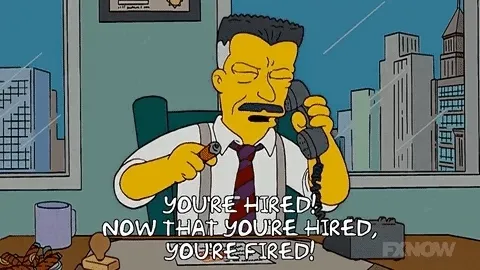As South Florida’s only academic-based healthcare system, the University of Miami Health System, known as UHealth, isn’t just a premier destination for patients but for talent as well.
This includes Alison Mincey, senior vice president and CHRO of UHealth and the University of Miami. She says the unique interplay of the organizations’ missions—exemplary patient care, breakthrough research and educating the next generation of leaders—is among the reasons she joined two years ago.
While many of the organizations’ 24,000 employees are drawn by those missions, she says, the HR team is also working to deepen the employee value proposition with leading-edge benefits and workforce management strategies driven by a strong commitment to employee listening and innovative hiring strategies.
Mincey, who previously held leadership roles at Ohio State University and its Wexner Medical Center, recently shared with HRE how UHealth and the University of Miami are leaning into their missions to navigate transformation.
Mincey: We have continued to evolve our benefits program over many years. We have two different industries here: higher education and academic medicine. Those two bring with them different focuses for the workforce and, in some instances, have impacted the benefits we look at. For instance, childcare—we have multiple childcare locations, including one that opens early and closes late for those in our inpatient unit. That’s something that is very important to that segment of the workforce because they need those hours based on their schedules.
We’ve also done something innovative with our retirement platform. We have a very, very robust performance management process, and for the highest performers in the workforce, we contribute additional dollars to their retirement fund. It’s an additional incentive for high performance. We really believe deeply in rewarding those who contribute greatly to the workforce. Recognition is something we’re continuing to focus on in terms of continuous improvement.
We also hear loud and clear [from employees] about student loan debt, so we put in place a program that supports employees via a monthly contribution to pay off their student loan debt for those on the clinical side. Our hope is to move that forward to the entire workforce. We really believe in asking our workforce what they want and need. That’s a journey we’re on.
HRE: Given the industries you work in, how are you confronting employee burnout?
Mincey: Even before the pandemic, it was a major issue, especially in healthcare, and then that was obviously exacerbated by the pandemic. We’ve really been focused on making sure we have good programming. We do have an EAP that’s more traditional in nature. And we’ve worked really hard on one of the biggest contributing factors to stress and burnout with our clinical workforce: staffing. We looked at our staffing model to make sure we’re recognizing where and when we need to have additional staff. We’ve been able to do that through a couple of different models.
One is that we’re making sure we have good partnerships with temporary labor through contracting agencies. A lot of nurses are traveling to places like Florida to enjoy the nice weather and work on paying off their student loan debt—so we’ve had a great pipeline of temporary labor that others across the country haven’t been able to enjoy. But that pipeline comes with a high cost so we’ve had to balance that.
We balance that through strategy; some folks will call it an internal agency or the use of a per diem strategy. We’re really focused on engaging individual workers to help offset clinical staffing needs. And then looking at different models of care like virtual care is also helpful [in addressing staffing-related burnout]. Making sure we’re appropriately staffed is the key to assisting our employees with stress.
HRE: What are the most innovative hiring strategies the organization has deployed amid ongoing labor shortages?
Mincey: There’s so much pride in working here—we’re at the wonderful intersection of higher education and academic medicine, and we’re the only academic medical center in this part of the country. [Hiring] here is about having multiple tools in the toolbox, not just one.
A key component is making sure we’re hearing from our workforce routinely; that’s something we believe very strongly in. That’s the first step.
Shortly after I joined, we put in place an employee referral bonus program. That’s been used in excess of 1,000 times over the last 18 months or so, so that’s been very successful. Another strategy is around having our workforce be our best recruiters. We hold in-person and virtual career fairs, and we make sure our hiring managers are with us—it shouldn’t just be HR doing the work.
Another [focus] relates to our temporary workforce. With our contractors, if they’re having a good time and providing good service to our mission, we want them to stay. We have a program set up to quickly extend offers to contractors when their contract is up, and that’s worked really well for us.
HRE: What are the cultural implications of integrating your temporary and permanent workforces?
Mincey: That’s definitely very important. Our contingent labor force is reduced from where it used to be; because of the nature of healthcare, there will always be a need, but it’s not as big of a need today.
Leadership is everything. We have to make sure our leaders are well-equipped to promote a positive culture, and that has to include behaviors, communication, cascading information. We have to be clear on our strategic objectives—what’s most important to the university at any given moment in time—so our employees understand what’s expected of them. Everyone in our workforce has an opportunity to provide value, and everyone should feel valued. Leaders are key, critical components in that conversation.
HRE: What HR challenge is keeping you up at night at the moment?
Mincey: Making sure we’re being innovative about retention. Recruitment is still critically important, but we’re making sure we don’t ever take our eye off the ball when it comes to retention. I think it’s something that anybody in my seat is thinking about today.
Equally important for us is operational efficiency—looking at our cost structure and thinking through if we can and should be doing things differently. You can’t think about anything anymore with the focus on “This is the way we’ve always done it.” You have to think about the future. I’m talking with my team a lot right now about AI, for instance. That’s really changed things for us in HR and in how we can support our workforce already. So much has changed in such a short amount of time; I can only imagine how much further we’re going to be able to take our support for our workforce because of AI.
HRE: What has most influenced who you are as an HR professional?
Mincey: My family. I have a very, very supportive husband. We’ve been together for a long time, and it’s so important to have someone who believes in you and in the mission you’re working for. My husband says I would be bored to tears if I worked in any other industry than healthcare and higher education because they’re so dynamic; it really does provide a lot of diversity in the day-to-day. It’s been a humbling opportunity to sit in this seat, and to have a family that supports me in this work is great.











